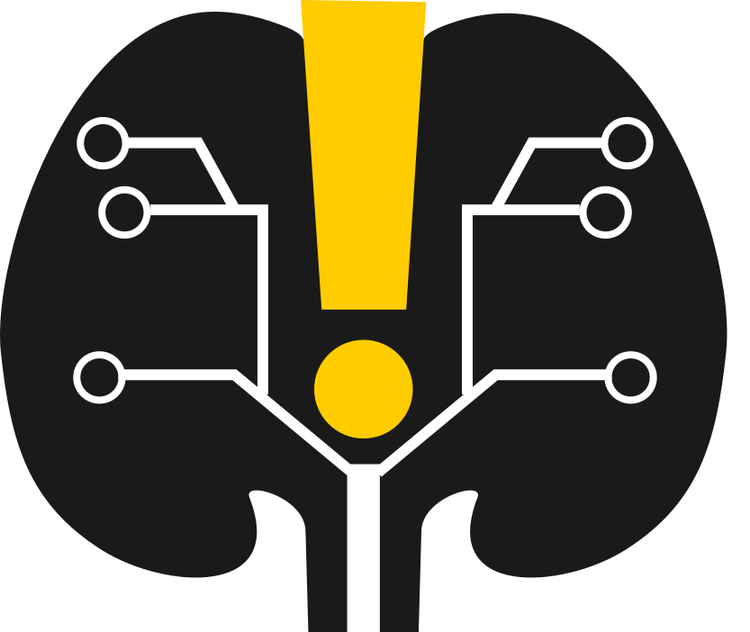Acute Kidney Injury (AKI) Best Practices
What follows is a summary of best practice recommendations based upon the Kidney Disease: Improving Global Outcomes (KDIGO) and the National Institute for Health and Care Excellence (NICE) guidelines. Please contact us with any questions, concerns, or additions.
KDIGO AKI Definition: AKI is defined as an absolute increase in serum creatinine by 0.3mg/dl within 48 hours or a relative increase of 50% within 7 days. While urine output criteria can also define AKI, these criteria are not used in the AKI Alert study.
AKI Workup
Evaluate for pre-renal causes
Clinical situation - poor intake? Excessive losses? Nausea/vomiting, Diarrhea? Increased intra-abdominal pressure? Decompensated cirrhosis? Decompensated heart failure?
Physical exam - blood pressure (including orthostatics), jugular venous pressure, capillary refill
Workup - urinalysis, urine electrolytes, urine creatinine, urine urea nitrogen (for patients on diuretics), complete metabolic panel, CBC with differential
Evaluate for Urinary Obstruction
Clinical situation – male? Prostate disease? Other intra-abdominal pathology?
Physical exam – distended bladder?
Workup: Post-void residual (Foley or straight cath if ascites present), Renal ultrasound
Evaluate for Intrinsic Renal Injury
Clinical situation
Tubular Injury - exposure to nephrotoxic drugs / contrast? Hypotension? Sepsis?
Glomerular Injury - Systemic signs of vasculitis (eg rash)
Vascular injury – Risk factors (such as recent vascular procedure or surgery)? Other stigmata of systemic embolism?
Interstitial injury - Exposure to a medication associated with AIN? Rash?
Workup
Urinalysis + urine microscopy: cellular casts? Hematuria?
CBC with diff (platelet count, eosinophil count)
When is a renal consult appropriate?
Whenever the care team has a question or concern about the patient
Unclear etiology of AKI
Progressive AKI despite optimal care
Concerning urinalysis findings: red cell casts, significant proteinuria
Electrolyte/Acid base abnormalities (hyperkalemia, severe metabolic acidosis)
Refractory volume overload
Uremia (pericardial rub, encephalopathy)
Exposure to methanol or other toxin, drug overdose of dialyzable substance (eg lithium)
Anuria
Indications for urgent dialysis
Management
Best practices
Follow-up serum creatinine measurements
Fluid "ins and outs" recording
Daily weights
Daily Clinical / Volume Assessment
Drug dosing review
Optimize hemodynamics
Avoid nephrotoxic agents if possible such as:
Iodinated contrast
Non-steroidal anti-inflammatory drugs (NSAIDs)
Aminoglycosides (if possible)
Chemotherapeutic agents (platins, etc)
Amphotericin B
Consider holding diuretics if no overt volume overload
